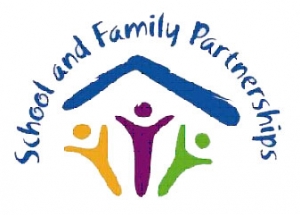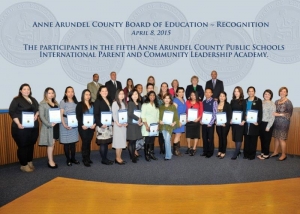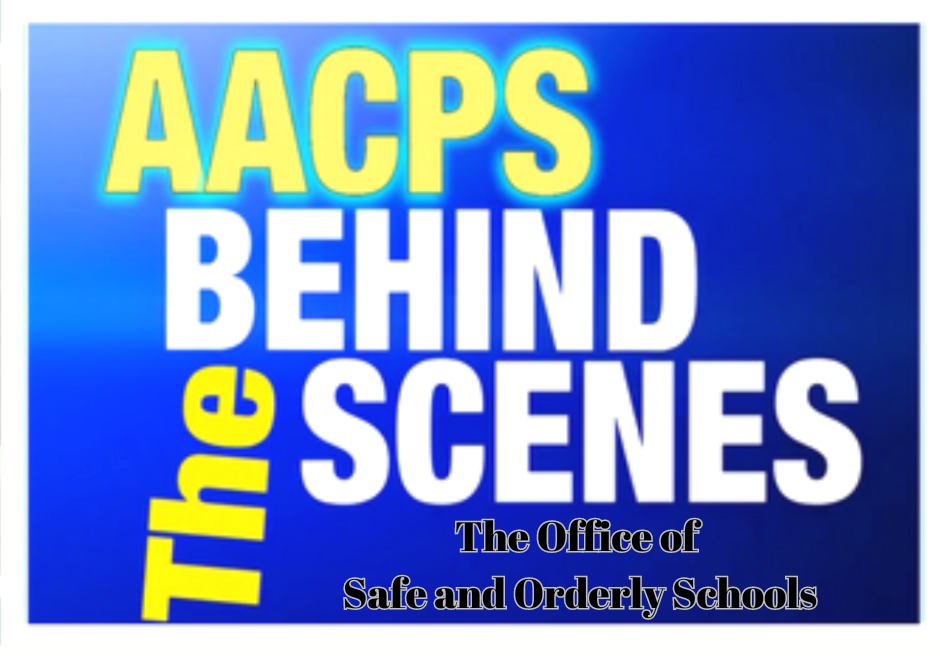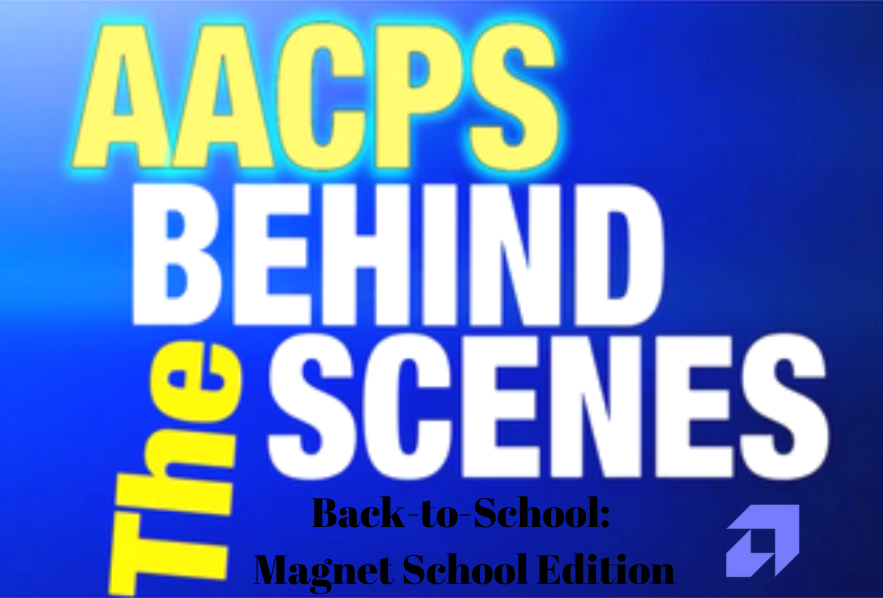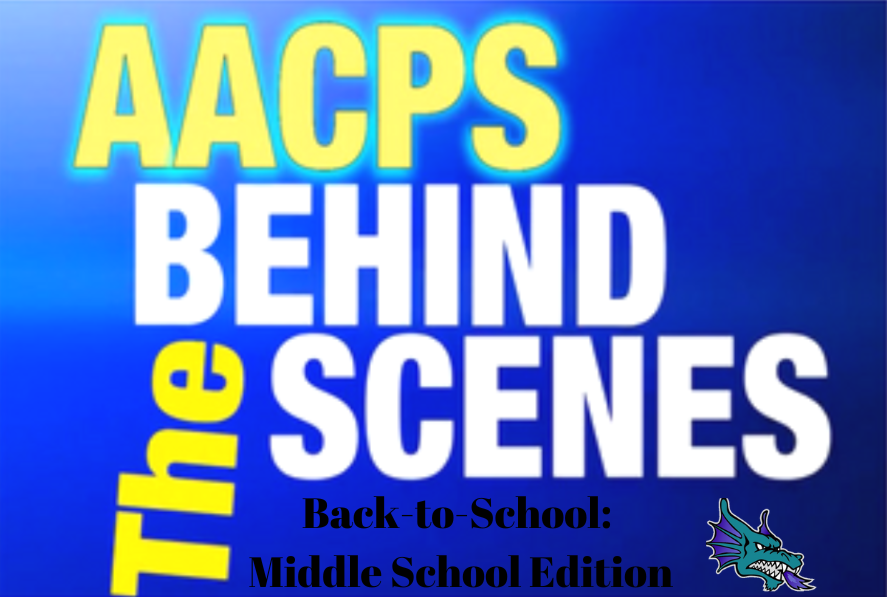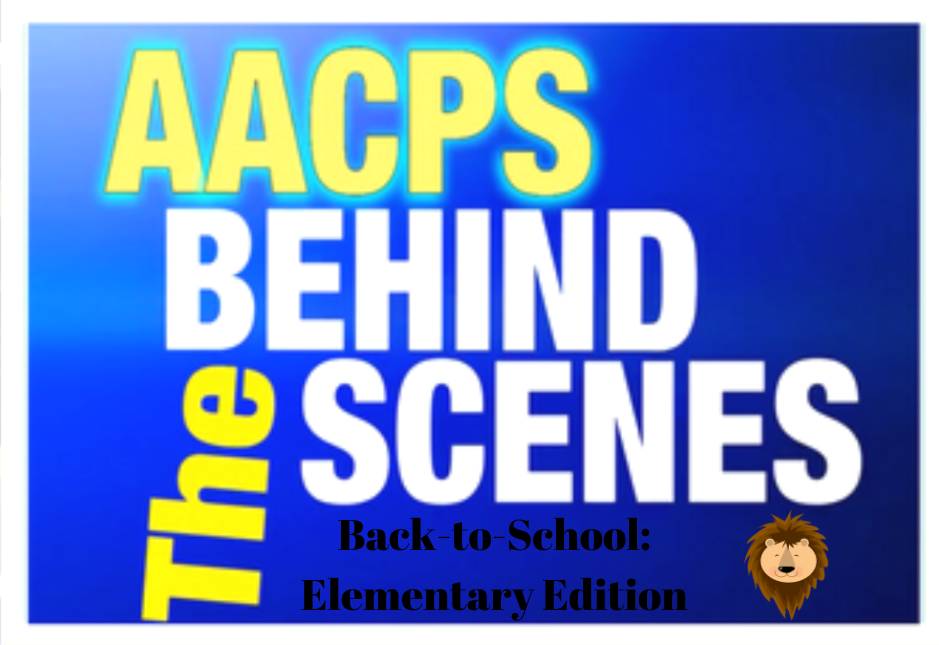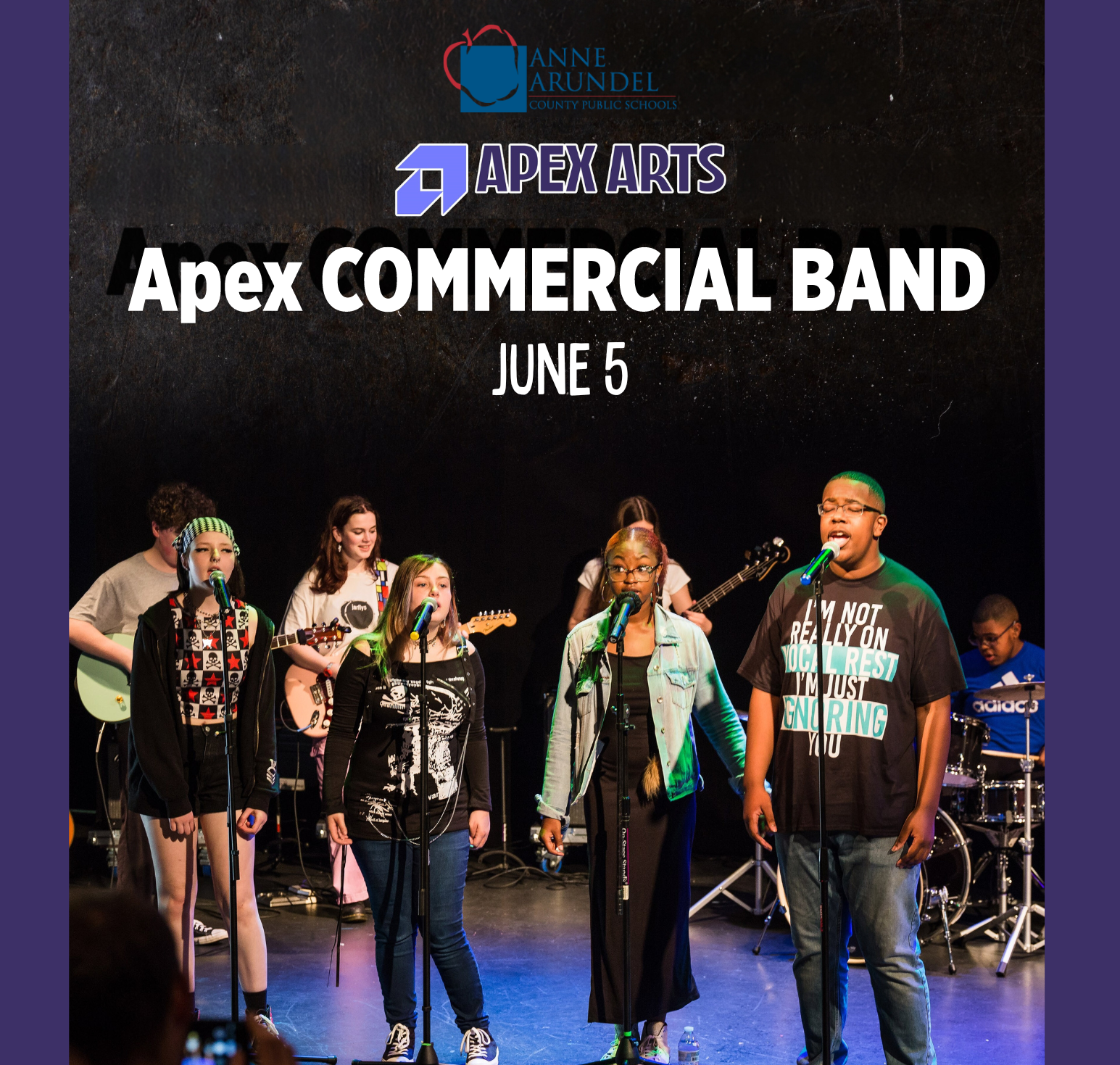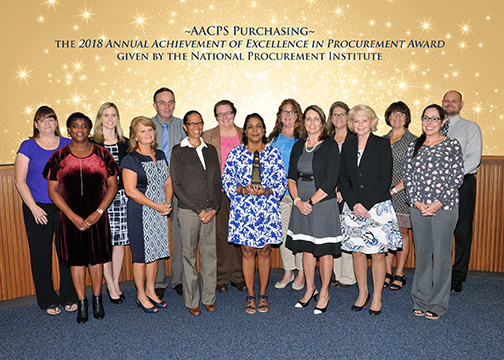Para leer este artículo en español, haga clic aquí.
(This article was updated 1/6/16 to reflect statistics for the 2015-2016 school year).
At Annapolis High School, Sandra Acevedo-Harper walks through the halls on Tuesday morning. Like other members of the staff, she greets students as they run up to give her a hug, helps a ninth grade student find her class, and stops a senior after the last bell to get a late pass. What makes Sandra’s interactions different from the others going on around her, however, is that almost all of her conversations are in Spanish. Sandra is a Bilingual Family and Community Outreach Facilitator (Bilingual Facilitator) at Annapolis High School, offering a bridge between the school and international families.
Bridging the growing language gap in Anne Arundel County
Beyond a traditional interpreter or translator, Bilingual Facilitators are responsible for helping language-minority/international families become involved in their children’s education. Simultaneously serving the student, family, and school, Bilingual Facilitators are available to every school in Anne Arundel County to communicate information between teachers and students, share resources from both the school and the community with parents, and offer families an advocate inside the school building.
Sandra returns to her office just in time for a phone call: “Buenos dias le habla la Senora Acevedo-Harper en que le puedo ayudar?” She nods along as the caller explains that his daughter, a student who Sandra has worked with before, is getting ready to return home from the hospital. Sandra explains the student’s right to a home/hospital teacher and makes a note to contact the school’s nurse and the student’s teachers, when a parent knocks on the office door. The mother came to the school with questions about her son and, as a Spanish-speaker, was directed to Sandra for help. Sandra greets the mother and pulls up the child’s information. Just as she begins reviewing the student’s record, the School Counselor stops by with an emergency regarding a student in the building. The student speaks English but would feel more comfortable talking in her native Spanish with Sandra, whom the child has worked with before. Sandra finishes her meeting with the mother to join the administrative team working with the student.
Like all Bilingual Facilitators, Sandra has become used to moving quickly from one task to the next. She is lucky to work exclusively at Annapolis High School—one of only two AACPS Bilingual Facilitators who work full time at one school—but that does not lessen her workload. The school has one of the highest populations of Spanish-speaking families in the county and both parents and staff alike rely heavily on Sandra and Hilda Torres-Ramirez, the school’s second part time Bilingual Facilitator, to communicate.
As the population of non-English speaking families in Anne Arundel County continues to grow, Bilingual Facilitators, who fall under the Office of School and Family Partnerships, are becoming increasingly important to providing all students with an equal access to education. Since 2008, the number of English Language Learner (ELL) students in the county has doubled and the number of minority language families (who may or may not have an ELL student but who are served equally by Bilingual Facilitators) has increased significantly. But the number of bilingual staff in the schools remains low, making it difficult to communicate even basic information to families.
To help bridge this gap, 18 AACPS Bilingual Facilitators, who collectively speak 10 different languages from Spanish to Korean to Urdu, stretch their time across 126 schools and special centers to serve over 6,000 families. Each Bilingual Facilitator serves approximately 430 students and most split their time between multiple schools, based on the minority language population at each school. On average, most Bilingual Facilitators serve nine schools, but some serve more than 20.
Because of the lack of bilingual teachers and staff within the county, Bilingual Facilitators are often called upon to take phone calls, interpret Parent/Teacher conferences, translate newsletters, and greet non-English speaking parents that visit the school. But this component is only part of a Bilingual Facilitator’s much larger role in serving families.
Connecting families to resources in & out of school
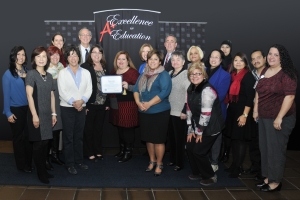 Across the county at Meade High School, Bilingual Facilitator Tony Vasquez sits down at his desk after a morning at Meade Middle School. He pulls out a list of students who have had multiple absences this marking period and begins making phone calls to the students’ guardians. While a simple task in theory, Tony knows that it will most likely take two or three days to get through the list. Even beyond the language barrier, many international families live in poverty, work multiple jobs, and do not have reliable phone service. What for many teachers would be a single call home to discuss a student’s tardiness may be several hours of tracking down a working number to reach a family member who can pass on information to a child’s parent. To overcome these challenges, developing trusting relationships with families is critical.
Across the county at Meade High School, Bilingual Facilitator Tony Vasquez sits down at his desk after a morning at Meade Middle School. He pulls out a list of students who have had multiple absences this marking period and begins making phone calls to the students’ guardians. While a simple task in theory, Tony knows that it will most likely take two or three days to get through the list. Even beyond the language barrier, many international families live in poverty, work multiple jobs, and do not have reliable phone service. What for many teachers would be a single call home to discuss a student’s tardiness may be several hours of tracking down a working number to reach a family member who can pass on information to a child’s parent. To overcome these challenges, developing trusting relationships with families is critical.
Out of the five schools he serves, Tony especially likes his front office desk at Meade High School because it makes it easier to see visitors as they come through the school. Each day, Tony meets with students and families who are new to the United States and so do not have any experience with the American education system. The aspects of school that are second-nature for most families—such as parent/teacher conferences, school schedules, even Physical Education class—are completely new to many international students and their parents. When international families arrive at the school, Bilingual Facilitators like Tony spend time taking them by the hand to introduce them to the system. Together, they talk about how to read a report card, how to understand the school’s testing schedule, and how to make sure their children meet all graduation requirements. Through this time together, parents and students alike learn to see the Bilingual Facilitator as a resource within the school that they can go to with any question.
Beyond providing school-based support, Bilingual Facilitators also help their families connect with community resources such as health care, transportation, and immigration services. Throughout his 7 years as a Bilingual Facilitator, Tony has walked the line between interpreter and counselor, advocate and social worker. He helps parents complete job applications and has helped students collect their citizenship documentation so that they can apply to college. Once, while he was following up on a student’s missing immunization records, he discovered that the family did not have beds in their apartment. He contacted the school’s Pupil Personnel Worker (PPW) and was able to connect the family to resources so that they could furnish their home. Because of this dedication, like most Bilingual Facilitators, Tony has become a lifeline to the families that he serves. In his own words, Bilingual Facilitators, “become the lighthouse in the middle of the sea to give [these families] hope.”
This balance between educator and social worker is often delicate and requires a skill set that goes beyond a straight interpreter/translator. After completing a written and oral language assessment, Bilingual Facilitator applicants explore a series of scenarios to explain how they would respond to a variety difficult situation in a way that still respects the boundaries of the family, student, and other school personnel. The resulting team of AACPS Bilingual Facilitators is a tight-knit community. They come from backgrounds that are diverse in both culture and experience but are drawn together by their intense willingness to help immigrant families find their way.
Promoting family & community outreach
On Wednesday night at Georgetown East Elementary School, over half a dozen families gather in the media center. Karen McDonough, the school’s Bilingual Facilitator, greets each family as they walk in and offers them dinner. This is Noche Latina, one of many family events offered throughout the county for language minority families to gather, learn information about what’s going on at the school, and gain resources from the community. Tonight, the group meets a representative from Baltimore Gas Electric (BGE) who gives the families tips, in Spanish, about how to qualify for rebates and reduce their electricity bill.
These family events are important not only to share information, but also to help families feel welcome within the school. For many international families, becoming involved in their school community requires them to think differently about their relationship with the school. Unlike American culture which welcomes families in the schools, many global cultures discourage families from becoming involved in the classroom, seeing it as a sign of disrespect to the school. Bilingual Facilitators help families to feel welcome within the school building.
At Noche Latina, Karen shares some strategies that parents can use to help their students complete homework. One parent asks about how her daughter’s homework will change when she moves from Pre-Kindergarten to Kindergarten. A mother sitting at the next table says that her own child was in Kindergarten last year; she explains how Kindergarten homework was assigned and what the teachers expected. It was exciting to see the answer come from another family because it shows a growing level of confidence among the group.
Helping families develop this confidence is the ultimate hope of every Bilingual Facilitator. When parents feel empowered they can become advocates for themselves and their community. Every child and parent has rights within the school and when parents feel comfortable coming to the building, they can stand up for those rights. As the Bilingual Facilitator program has grown in AACPS, so too have opportunities for international parents to have a voice. There is now an International Parent & Community Advisory Board with representatives from seven different cultural communities as well as representatives from the Office of Equity and Accelerated Student Achievement and the County’s Human Relations Commission. Furthermore, there is an annual International Parent and Community Leadership Academy (IPCLA), which is a six week program created to develop leaders among international members of the community. Five classes of parents have graduated from this academy, resulting in 66 international parent leaders. By gaining a voice within the schools, international families are gaining a voice in the community as well.
Over the next several years, the number of ELL students is expected to continue growing within Anne Arundel County. As more and more international parents find homes within our community, Bilingual Facilitators are essential to reminding parents that they are not alone. Offering a bridge to the schools, resources in the community, and a friendly face to talk to, Bilingual Facilitators can provide the help that parents need to find their way—serving as the lighthouse that can guide them to feel at home.

